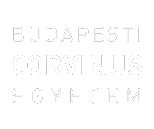Nguyen, Ngoc Bach (2021) An overview of distance education during the pandemic: Student-teacher communication over videoconferencing platforms. BA/BSc szakdolgozat, BCE Kommunikáció és Szociológia Intézet, Kommunikáció- és Médiatudomány Tanszék. Szabadon elérhető változat / Unrestricted version: http://publikaciok.lib.uni-corvinus.hu/publikus/szd/Nguyen_Ngoc_Bach.pdf
|
PDF
- Requires a PDF viewer such as GSview, Xpdf or Adobe Acrobat Reader
943kB |
Szabadon elérhető változat: http://publikaciok.lib.uni-corvinus.hu/publikus/szd/Nguyen_Ngoc_Bach.pdf
Absztrakt (kivonat)
This research paper presents and condenses the background, findings, and result of a case study regarding student-teacher perception of distance education over videoconferencing platforms in higher education. The recent COVID-19 pandemic has forced universities to rapidly implement the emergency remote education (ERE) model, adapt the transition from face-to-face (F2F) education to online distance learning in a relatively short time. Past studies have focused on a general approach to online learning experience, therefore, this paper aims to give a closer look, in particular, to the current online learning situation. With the implementation of online synchronous and asynchronous distance education, the communication between students and teachers may vary greatly and thus, there is a need for a unifying solution for the best learning experience. In this thesis, I will review the following literature from different authors, including distance education (e.g., Harting & Erthal, 2005; King et al., 1990) and its variant emergency remote education (e.g., Bozkurt et. al, 2020), videoconferencing applications (e.g., Egido, 1988; Chai & Lazar, 2020) and their communication modes (e.g., Hampel and Stickler, 2012), synchronous and asynchronous distance education (e.g., King et al., 2001; Branon & Essex, 2001), linguistic communication (e.g., voice chat and text messaging) (e.g., Herring et al., 2013), visual communication (i.e., webcams) (e.g., Tomprou et al., 2021) and social/physical presence (e.g., Rehn et al., 2016). A questionnaire based on the literature was designed specifically for two target audiences - students and teachers. The questionnaires will contain different sections that aim to discover forementioned aspects of online learning. The methodological approach taken in this study is a mixed methodology based on qualitative analysis of the literature review and quantitative summary of the collected data. The results from this study indicate a general favorable view from the participants toward the communication tools provided by videoconferencing platforms, particularly synchronous voice chat and text-messaging. This study also found trend of avoidance toward webcams usage, despite the feature providing a channel for visual communication. On a broader scope, factors such as reduced motivation, social isolation may explain the behavior above and general limited communication among students and teachers in online classes. Increasing immediacy behaviors for the teachers was suggested to improve the communication and engagement among the students. Implementation of various features provided by videoconferencing applications can also improve collaboration and productivity for both instructors and learners. Future studies maybe conducted to clarify the perception of online learning in different countries, as different cultural and economic backgrounds may give people different mindsets towards videoconferencing. I expect this study to give the readers a better perception to students and teachers’ experience regarding distance education over videoconferencing platforms. However, it is necessary to remind the readers the context of this study: emergency remote education during the Covid-19 pandemic. Overtime, online education may evolve in both technological and pedagogical aspects, therefore, the situations and opinions of people may change as well.
| Tétel típus: | BA/BSc szakdolgozat |
|---|---|
| Témakör: | Oktatás Információgazdaság |
| Azonosító kód: | 14791 |
| Képzés/szak: | Communication and Media Science |
| Elhelyezés dátuma: | 12 Szept 2022 10:10 |
| Utolsó változtatás: | 12 Szept 2022 10:31 |
Csak a repozitórium munkatársainak: tétel módosító lap

